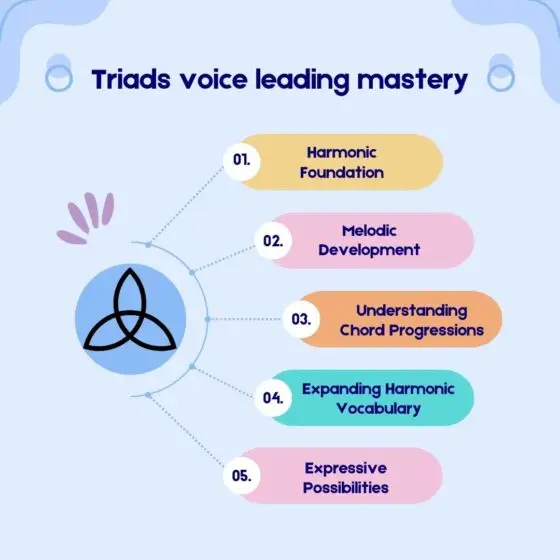What is reharmonization?
In music, reharmonization refers to the process of changing the harmonies in a piece of music, while still maintaining the original melody. This can be done for a variety of reasons, such as to add interest or variety to the music, to better match the chord progression to the singer’s range, or to introduce a new musical idea.
Reharmonization can be a complex and advanced technique, and it requires a deep understanding of music theory and harmony.
Let’s look at how we can reharmonize a melody originally based on I V7 V7 I:
Qu'est ce que reharmoniser?
Réharmoniser est le fait de changer l’harmonie d’un morceau en gardant la mélodie originale afin de créer de nouvelles couleurs, de nouvelles conduites de voix, aussi bien pour improviser que pour écrire des arrangements.
Regardons quelques exemples qui explorent les II-7 relatifs, les reharmonisations diatoniques, les dominantes secondaires et les substitutions tritoniques.
Video lesson:
Most of the time, you can add in front of a dominant chord (for instance G7), the related II-7 (D-7). This creates more harmonic motion. This is a very common harmonic device we use when there is one dominant chord in a bar, and of course it’s even more useful if the dominant chord is over two bars (think about the bridge a the rhythm changes!). Melodically the improviser can freely choose to use both or either chords.
We can add or swap chords with the same function (tonic, sub-dominant or dominant). If you have two bars with the I chord, try to insert the VI for instance.
A secondary dominant is a chord that temporarily functions as the dominant of a any diatonic chord other than the tonic chord. Using secondary dominants will add new tensions and possibilities for chromatic lines.
We can go one step further with the tritone substitutions of these secondary dominants. Make sure it doesn’t conflict with the melody!
• Lorsque j’ai un accord de dominante (x7), il est quasiment toujours possible de rajouter le II-7 relatif (attention ne pas confondre avec le relatif mineur).
• On peut reharmoniser en ajoutant des accords diatoniques ou échanger des accords ayant la même fonction (tonique, sous-dominante ou dominante).
• Ensuite on peut explorer les dominantes secondaires (un accord de dominante qui se résoud sur un accord diatonique).
• Un niveau de complexité au dessus est l’utilisation des substitutions tritoniques des accords de dominantes. Faire bien attention qu’il n’y ait pas de conflit avec la mélodie!
Resources:
Create your FREE profile to download the PDF and access more lessons like this!
Did you enjoy this lesson?
Consider writing us a short review on Google or Facebook, that’d be much appreciated!









1 comments on “Examples of reharmonization”
Thank you Alex for these exemples of reharmonization. At the end maybe its also possible to use the Tadd Dameron cadenza as for Lady Bird CM7 EbM7 AbM7 DbM7(or Db7)(#11). It maybe also interesting to add a F#7 for beat 3 and 4 after G7 on bar 4 like a passing chord to keep going a chromatic descending bass line. and for the last four bars a progression like that I FM7-E/FM7 or Em7I Dm7-G7 or Db7ICM7-EBM7IAbM7-Db7I…But its going to be another tune with a new melody…